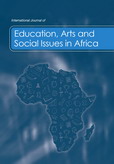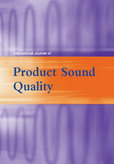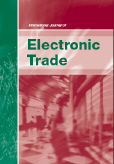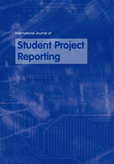Explore our journals
Browse journals by subject
Research picks
- Charging up a review of lithium-ion batteries
A comprehensive review of lithium-ion batteries in electric vehicles and energy-storage systems offers a valuable resource for researchers in this area, according to the authors writing in the International Journal of Vehicle Information and Communication Systems.
Electric vehicles (EVs) are an important part of sustainable personal transport as we try to move from a world drive on fossil fuels to one powered by solar, wind, and other renewables. Lithium-ion batteries continue to play a vital role in the ongoing success of EVs, and will do so until an even better alternative storage technology is developed.
Mandar Maruti Bidwe and Swanand Gajanan Kulkarni of the SKN Sinhgad College of Engineering in Korti, Pandharpur, Maharashtra, India, conducted a detailed review of the research literature covering the period 2010 to 2022. They hope that their work will shine headlights on the lithium-ion battery roadmap and help researchers navigate the terrain towards future sustainable of electric transportation and energy storage.
The team's review looked at various aspects of lithium-ion battery technology and shows that it is important to understanding the diverse materials used in different types of battery and the impact these material choices have on performance, lifetime, and sustainability. The team explains that materials such as lithium cobalt oxide offer high energy density but are hindered by limited availability and lower thermal stability. By contrast, materials such as lithium iron phosphate are much safer and longer-lasting, but do not necessarily have the energy density some applications demand.
There is an ongoing need to model the behaviour of different types of battery in order to develop technology that optimises battery performance and management systems without too much compromise in terms of sustainability and resource safety and ethics. The review points to various papers that have focused on such models and assesses which might be used to best effect by researchers. This is critical given that challenges exist, not least in terms of the recycling and sustainability. The team points to several research gaps in these areas that could help focus efforts.
Research into lithium-ion batteries is multidisciplinary and given its central role in the electrification of transport it will be a focus for several years yet. This review offers waymarkers on the roadmap for research and development.
Bidwe, M.M. and Kulkarni, S.G. (2024) 'Lithium-ion battery: a review', Int. J. Vehicle Information and Communication Systems, Vol. 9, No. 2, pp.135–163.
DOI: 10.1504/IJVICS.2024.137854 - Clocking the influencer effect on TikTok
TikTok is a social media platform known for its short-form videos. Content creators, who have built a significant following on the site, often work with corporate brands to promote products to their audience, often through affiliate marketing. This involves a so-called influencer sharing products in their videos with affiliate links and then earning a commission from the company for purchases made through those links. It might be said that success lies in creating authentic content that attracts users and takes advantage of the current trends. However, for an influencer to be successful, they need to be transparent about their affiliate relationships in order to build and maintain the trust of their audience.
Writing in the International Journal of Technology Marketing, Minh T.H. Le of the College of Business at the University of Economics in Ho Chi Minh City (UEH), Vietnam, discusses how the effectiveness of affiliate marketing might be improved by users hoping to influence young people. Le's study was based on a standardized questionnaire distributed across internet platforms. The results were analysed using Partial Least Squares Structural Equation Modelling (PLS-SEM). Her research identified some of the factors affecting consumer trust and buying decisions, including the opinions of other followers.
She found that the perceived expertise of content creators and feedback from their followers is important to consumer trust. Le explains that a marketing campaign can pivot on this point. However, the entertainment value of an influencer video, is perhaps the most important factor leading to better user engagement and whether that user buys the products touted by the influencers they follow.
The detailed findings discussed in IJTMKT offer practical guidance for marketers and businesses who are attempting to make the most of digital marketing. The advice suggests that companies need to understand how Key Opinion Leaders, Key Opinion Consumers, and influencers operate and the effect they have on everyday users. Given that TikTok appeals to a wide audience seeking amusement as well as product recommendations, it is worth exploring in detail its potential as a marketing channel.
Le, M.T.H. (2024) 'Enhance the effectiveness of affiliate marketing on Tiktok for young people', Int. J. Technology Marketing, Vol. 18, No. 2, pp.162–184.
DOI: 10.1504/IJTMKT.2024.137669 - Deep learning in the digital library
The digital library is a searchable store of text, audio and visual materials, and more. However, as the amount of data that must be stored and made searchable increases, efficient management and retrieval can be a major headache for the digital library. Research in the International Journal of Information and Communication Technology could lead to a new solution to the problem by integrating image processing, big data analytics, and deep learning techniques.
Xiaoyan Wang and Meimei Jia of Nanyang Normal University, Nanyang, Henan, China, like others, recognise the complexities of enhanced multimedia search and retrieval and have turned to the modern tool of deep learning to help. The team has developed a cross-media semantic search framework. This finds and uses the correlations between different types of media to assist in search and retrieval. Their deep learning algorithm can analyse and organize multimedia resources to improve search accuracy and system performance. Indeed, the use of this cross-modal correlation analysis and hierarchical knowledge inference in refining search results gave the team an almost 12 percent boost in search performance when compared with conventional approaches.
The approach will be useful for generic digital libraries and could be extended to personal devices such as smartphones, enabling greater access to useful information silos for the lay public. In more specialist applications, the same approach might be used in medical and scientific information systems. This could allow complex medical imagery, such as MRI scans and diagnostic test data and chemical databases, to be more readily searchable. In enterprise knowledge management systems, with such a system, companies could better handle their ever-accumulating data and information. Moreover, in any field where vast amounts of multimedia data accumulate every day and need efficient search and retrieval methods to make the most of the information they hold, an improved system will benefit users.
Wang, X. and Jia, M. (2024) 'Development of a unified digital library system: integration of image processing, big data, and deep learning', Int. J. Information and Communication Technology, Vol. 24, No. 3, pp.378–391.
DOI: 10.1504/IJICT.2024.137942 - The CALL of the word
Technology is changing all areas of education not least language learning. Research in the International Journal of Information and Communication Technology has looked at the potential of Computer-assisted Language Learning (CALL).
Learning a new language has usually relied on the traditional classroom setting and a native speaker of the language to teach students the vocabulary and grammar. However, there have for many years language learning systems that use voice recordings and books. In recent years, these systems have migrated to smartphones. The number of learners answering the CALL has risen because of the accessibility and convenience. Such systems now use artificial intelligence and algorithmic processing to help learners get to grips with their language second, or third, or more, language of choice. Indeed, the new tools offer an immersive and interactive language-learning experience.
Ning Li of the Public Teaching Department at Henan Vocational College of Tuina in Luoyang, Henan, China, explains that one aspect of language learning by app is the potential of the software to provide learners with an assessment of their progress and oral proficiency. If the system can analyse the words spoken by the learner in their non-native tongue, then they can be guided to the next level in their education appropriately or given advice on checking and rechecking their understanding and ability.
CALL systems can offer tailored teaching and thus have the potential to address individual learning needs, accelerating language acquisition for those learners who can cope and slowing the teaching process for those who need more time. Of course, variability in accent and dialect represent a challenge for the assessment algorithms and new innovations and refinements are still needed to make CALL as effective as traditional teaching and learning methods.
CALL could open up linguistic opportunities far and wide. With improvements in AI such systems will be able to assess learners before they are released into the wilds of international conversation.
Li, N. (2024) 'Research on scoring mechanism of spoken English self-study system taking into account artificial intelligence technology and speech knowledge recognition algorithm', Int. J. Information and Communication Technology, Vol. 24, No. 3, pp.350–365.
DOI: 10.1504/IJICT.2024.137941 - Cutting content in a crisis
The responsibility for maintaining online safety relies on content moderators particularly in times of crisis. However, not all platforms even have moderation systems in place and so disinformation, misinformation, propaganda, and fake news often circulate freely. The time of the COVID-19 pandemic was a case in point, but the propagation of fake news occurs during times of political change and in the wake of other kinds of crises and socioeconomic upheaval. However, there is much content online that is illegal rather than simply being fake and that must be removed summarily.
Some social media platforms and websites do have individuals and even teams who are tasked with checking user-generated content to ensure it does not contravene the law. Elena Martellozzo, Paula Bradbury, Ruth Spence, and Jeffrey DeMarco of Middlesex University, London, UK, and Paul Bleakley of the University of New Haven, West Haven, USA, point out that during and after the COVID-19 pandemic there was a surge in the volume of illegal content. They report details of their findings and the implications in the International Journal of Technology, Policy and Management.
The researchers have looked at the experience of content moderators during this period and their findings offer new insights into how this important online role can affect the moderators' mental well-being. Indeed, the upward trend in illegal material being shared online, exacerbated by lockdown measures during the pandemic, put the content moderators under immense pressure. There was a heightened risk of personal burnout, mental health problems, and even trauma when it came to particular kinds of illegal content that required moderation. The new findings suggest that there is an urgent need to improve the working conditions and personnel backup for such moderators.
Lessons drawn from the pandemic era should provide service providers and their staff, including their content moderators, useful guidance for the improvement of working conditions. Employers must prioritize mental health support, fair compensation, and comprehensive training, the research suggests. This is especially important given the role played by content moderators in helping to remove illegal content from the internet.
The researchers add that clear communication, professional development opportunities, and tailored support mechanisms, particularly for those working remotely or in a hybrid work environment, are important considerations for employers and service providers.
Martellozzo, E., Bleakley, P., Bradbury, P., Spence, R. and DeMarco, J. (2024) 'Supporting digital key workers: addressing the challenges faced by content moderators during and after the COVID-19 pandemic', Int. J. Technology, Policy and Management, Vol. 24, No. 2, pp.212–228.
DOI: 10.1504/IJTPM.2024.137818 - Crowdfunding success
The advent of crowdfunding, whereby innovative ideas find financial backing from the collective support of online communities, such as Indiegogo and Kickstarter, has allowed countless projects to become viable in recent years. Many of those projects, while attractive and ultimately successful, may never have garnered support from conventional investors and backers. Of course, not all crowdfunding enterprises are successful, and a study in the International Journal of Electronic Business has looked at how much effect first impressions has on what a campaign might ultimately achieve.
Mathupayas Thongmak of the Thammasat Business School at Thammasat University in Bangkok, Thailand, has focused on Indiegogo as a well-known crowdfunding platform. She points out that to date, the rate of success among crowdfunding campaigns remains relatively low. The present study offers insights that might help putative campaigners develop a more effective strategy for success.
Presentation is almost all when it comes to a successful campaign. Potential backers wading through many project options commonly rely on first impressions to decide whether to investigate a given campaign further. In other words, an attractive thumbnail image, text introduction, and category choice, are vital. Without them, most backers scanning for opportunities will simply swipe left, to use the parlance of dating apps, where such a swipe amounts to a rejection.
Earlier work has looked at the factors that coincide with a successful crowdfunding campaign, but Thongmak has used descriptive statistics, word clouds, tree maps, and hierarchical regression analysis to analyse data from more than 300 campaigns to look at what characterises successful outcomes. It seems that timing is almost everything, but appropriate category choice can affect success rate for campaigners significantly. Moreover, the most likely to succeed are campaigns in the technology and innovation sectors, with health and fitness products featuring prominently, followed by home, travel, and outdoor equipment. It is worth noting that text on a thumbnail image did not affect success rate. As such, Thongmak suggests that campaigners should use their thumbnail image to make their project stand out more from the other images through the choice of a more creative design and colour scheme.
Thongmak, M. (2024) 'Does first impression count? A look at Indiegogo campaigns on the 'Explore All Projects' page', Int. J. Electronic Business, Vol. 19, No. 2, pp.181–208.
DOI: 10.1504/IJEB.2024.137688 - Navigating shipping alliances
Research in the International Journal of Shipping and Transport Logistics has looked at the various factors that affect the overall effectiveness of shipping alliances in the container shipping industry. These alliances, formed as cooperative agreements between container carriers, have become an important part of the industry, providing benefits such as expanded market access, operational efficiency, and keeping companies afloat in turbulent times.
Hui Ting Lu, Kum Fai Yuen, and Kim Hock Tan of Nanyang Technological University in Singapore and Guanqiu Qi of Chung-Ang University in South Korea surveyed 180 executives from major shipping lines involved in prominent alliances. They used the survey results to identify 20 factors associated with successful alliances. They then measured the impact of these factors, such as opportunistic behaviour and constructive coordination, on outcomes for the companies involved in the alliances.
In order to formalise their results, the team categorized the critical success factors as: alliance rationale and conditions, partner search and selection, partnership design, partnership implementation, and partnership outcome evaluation. Within these different phases, the team found that alliance rationale and conditions in particular influenced constructive coordination among partners.
The team also used various theoretical frameworks, such as transaction cost theory, resource-based view, knowledge-based theory, sociological approaches, and general management and leadership theory to provide a comprehensive understanding of critical success factors and how they relate to those different phases and the outcomes among shipping alliances.
The team found that the initial phases of alliance building depended on strong foundations built through careful partner selection and the ongoing strength of the alliance needed a good working relationship for its implementation but also continuous evaluation of the pros and cons. The researchers also found that success depended on the ability for partners to adapt to external factors such as regulatory changes and cybersecurity threats to maintain coordination and achieve their goals.
The container shipping industry must ride the waves of changing markets. The research highlights a continued need for improved understanding of how alliances between different companies can work and to allow them to navigate safely through smooth seas and dire straits.
Lu, H.T., Yuen, K.F., Tan, K.H. and Qi, G. (2024) 'Critical success factors of strategic alliance in the shipping industry', Int. J. Shipping and Transport Logistics, Vol. 18, No. 2, pp.111–137.
DOI: 10.1504/IJSTL.2024.137890 - Glacial retreat and water worries
An analysis of glacial data spanning four decades has provided valuable insights into the changes taking place in the glaciers of the Pir Panjal range within the Kashmir basin in India. The research, published in the International Journal of Hydrology Science and Technology, analysed data for the period 1980 to 2020. It reveals significant losses in glacial mass and points out just how important this could be for the people and ecosystems that rely on the melt waters from these glaciers. It also highlights the flood risks associated with sudden catastrophic changes in the glaciers as they melt.
Mohmad Ashraf Ganaie and Syed Kaiser Bukhari of the National Institute of Technology Srinagar, Jammu and Kashmir, India, identified 122 glaciers that by 2020 had decreased notably in size since 1980. For example, a glacial region of almost 26 kilometres in 1980 had shrunk to just under 16 square kilometres by 2020. One particular glacial watershed, Vishaw, which encompasses 55 glaciers, had lost more than 6 square kilometres.
Topography plays an important role in how rapidly glaciers have receded during this period of time. The smaller glaciers, those less than or equal to 0.5 square kilometre, were found to be receded faster than the bigger glaciers. Moreover, south-facing glaciers and those at lower elevations demonstrated too were receding more rapidly, the team found. The different rates of glacial loss suggest that there are many complex factors at play.
The Himalayan glaciers are a vital source of water for those in their shadow. They play a major role in sustaining river flow and supporting human activities such as agriculture and hydroelectric power generation, as well maintaining the natural, local ecosystems, wildlife, and habitats. The impact of glacial loss will be gradual, but with accelerating loss due to climate change there is the risk of melted glacial lakes suddenly release huge volumes of water downstream, which could devastate human settlements and the ecosystems in its path.
Historically, there have been limited numbers of remote sensors and monitoring of the glaciers in this region. There is now a pressing need to understand the changes taking place and the effect these changes will have on water resource management, flood risk, and the local environment.
Ganaie, M.A. and Bukhari, S.K. (2024) 'Inventory and status of glaciers in the Pir Panjal Range Kashmir basin between 1980 and 2020', Int. J. Hydrology Science and Technology, Vol. 17, No. 3, pp.319–347.
DOI: 10.1504/IJHST.2024.137781 - Challenging the gig economy
Employee engagement among independent gig workers is an important issue facing organisations working with remote teams and individuals. A study in the International Journal of Management Concepts and Philosophy which looked at the connections between gig workers and their client teams, suggests there is a need to improve engagement to improve working conditions, well-being, and mental health for remote workers.
The gig economy is a labour market where individuals work on short-term contracts or as long-term freelancers. Freelancers have been a part of the economy for many years, but in the digital era, applications and platforms have opened up many jobs that were previously restricted to the conventional workplace. Gig workers enjoy flexibility but also face challenges like job security and benefits.
Rebecca Wason of Algoma University in Sault Ste. Marie, Ontario, Canada, has used a structured questionnaire based on William Kahn's three facets of employee engagement – meaningfulness, safety, and availability – and found significant differences in gig worker engagement levels. It seems that gig workers commonly feel satisfied with their work, but often feel isolated from their peers and management.
The research found that many respondents felt a lack of clarity from their managers regarding the significance and purpose of their work was a major problem. In addition, Wason found that some respondents felt that they had insufficient guidance on organisational culture and norms. This, the work suggests, leads to difficulty in integrating within client teams as well as a problem with forming social bonds. This leads to feelings of exclusion and detachment.
Effective communication, clear task assignment, and supportive organisational structures are all important in improving gig worker engagement. Addressing such issues could improve the working lives of gig workers, as well the outcomes for the organisations for which they work.
Wason, R. (2024) 'Disengaged: the problem of employee engagement in gig workers', Int. J. Management Concepts and Philosophy, Vol. 17, No. 2, pp.149–160.
DOI: 10.1504/IJMCP.2024.137637 - Digital games debrief cyberbullies
The global COVID-19 pandemic caused much suffering and tragedy and continues to do so. One aspect of our everyday lives that was massively disrupted was education. Conventional classroom teaching methods had to be digitised urgently during lockdowns when schools were forced to close to reduce the risk of spreading the potentially lethal coronavirus. A study in the International Journal of Mobile Learning and Organisation has looked out how new strategies had to be developed during this time and how educators were forced to tackle the emergence of cyberbullying among middle school students that the shift to online learning led to.
In their work, Sasipim Poompimol, Suthiporn Sajjapanroj, and Thanyaluck Ingkavara of Mahidol University in Nakhon Pathom, Patcharin Panjaburee of Khon Kaen University in Khon Kaen, Chanayuth Changpetch of Mahasarakham University in Maha Sarakham, and Preeyada Tapingkae of Bansanpasak School in Chiang Mai, Thailand, introduced a digital board game along with multimedia debriefing sessions that could be used as educational tools for online and distance learning. These tools can be used to reduce the incidence of cyberbullying during a major crisis and afterwards, where online learning has become part of the new normal.
The team's case study involved 56 middle school students. The team found that the students' understanding and perceptions of cyberbullying after participating in gaming sessions with multimedia debriefing was much greater than when compared to those gaming sessions without the debriefing. Self-reported questionnaires and interviews further indicated positive experiences with the multimedia debriefing method and effectiveness of this game-based approach to learning in improving the students' understanding of cyberbullying and hopefully leading to a fall in the number of such incidents.
The research also has implications beyond addressing the problem of cyberbullying. A similar approach might also be used to address mental health and digital well-being issues that arise when students are isolated from classmates and find themselves learning in their homes rather than the classroom, where there might be family or other environmental pressures on them. Innovation of this kind allows teachers to improve the learning experience for students. This will be relevant in the post-pandemic world and in the future when we have to face another such crisis.
Poompimol, S., Panjaburee, P., Sajjapanroj, S., Changpetch, C., Tapingkae, P. and Ingkavara, T. (2024) 'Ubiquitous game-based learning with a multimedia debriefing on cyberbullying during the COVID-19 pandemic', Int. J. Mobile Learning and Organisation, Vol. 18, No. 2, pp.135–168.
DOI: 10.1504/IJMLO.2024.137610
News
Associate Prof. Xin Wang appointed as new Editor in Chief of International Journal of Signal and Imaging Systems Engineering
Associate Prof. Xin Wang from Shenyang Jianzhu University in China has been appointed to take over editorship of the International Journal of Signal and Imaging Systems Engineering.
International Journal of Entrepreneurship and Small Business indexed by Clarivate's Emerging Sources Citation Index
Inderscience is pleased to announce that the International Journal of Entrepreneurship and Small Business has been indexed by Clarivate's Emerging Sources Citation Index.
The journal's Editor in Chief, Prof. Leo Dana, thanks his editorial board and IJESB's reviewers for the parts they played in reaching this significant milestone, as well as all the authors who've submitted their research to the journal.
International Journal of Sustainable Aviation indexed by Scopus
We are pleased to report that the International Journal of Sustainable Aviation has been indexed by Scopus. Inderscience's Editorial Office congratulates the journal's Editor in Chief, Prof. T. Hikmet Karakoc, along with his Associate Editors and Editorial Board.
Editor's call for papers for the International Journal of Complexity in Leadership and Management
Prof. Marco Valeri (marco.valeri@unicusano.it), the new Editor in Chief of the International Journal of Complexity in Leadership and Management (IJCLM), invites articles on topics related to complexity in leadership, governance, management and organisational dynamics. This will help to provide a summary of current research along with predictions of where research is likely to go in the future on the subjects of complexity, nonlinearity, consciousness, intrinsic intelligence, collective intelligence, connectivity, autopoiesis, adaptation, diversity, self-organisation, emergence, dissipation, edge of chaos, butterfly effect and sustainability. Researchers and practitioners are invited to submit articles to IJCLM so that they can share their research on the subject.
List of topicsTopics include, but are not limited to, the following:
- Leadership sensitive to initial input, innovation and creativity
- Empirical research in frameworks and practices
- Internationalisation
- Cultural entrepreneurship
- Digitalisation and artificial intelligence
- Tourism management
- Nonlinear intelligence/thinking, knowledge management, organisational learning
- Complexity/intelligence mindset, intelligence paradigms
- Family business and financial performance
- Complexity adaptive dynamics, complexity/intelligence-centric processes
- Impact of managerial organisation on communities
- Developments and changes in managerial ideas
- Gender impact on organisations
IJCLM is an international peer-reviewed journal. It aims to promote a deeper comprehension and to provide dialogue across country borders and cultures on the issues of complexity in leadership, governance and management. In this respect, it aims to serve as a platform where new philosophies, theories, empirical research findings and case studies can be published and shared internationally.
ReadershipIJCLM is a vehicle which provides the latest findings, developments and thinking in management, governance and leadership to corporate leaders, company managers, business consultants, education leaders, national policy makers, military leaders, academics and researchers. IJCLM is also a forum through which different stakeholders worldwide can disseminate new thinking, theories, strategies and practices involved in complexity in leadership, governance and management, thus learning from each other's expertise and experience.
ContentsIJCLM publishes original papers in theoretical development and empirical research, case studies, discussion papers, conference reports, book reviews, commentaries and news dealing with the frontiers of complexity in leadership, governance and management. IJCLM welcomes worldwide contributions from academics, researchers, policy makers, corporate leaders, educators and business consultants and practitioners with interest in the topics specified.
Submission processAll articles for this journal must be submitted using the online submissions system available via the Submitting Articles tab at www.inderscience.com/ijcih. Please follow all instructions and author guidelines.
There are no charges for publishing with this journal, unless you require your article to be Open Access. You can find more information on OA here.
Associate Prof. Laura Broccardo appointed as new Editor in Chief of International Journal of Corporate Strategy and Social Responsibility
Associate Prof. Laura Broccardo from Università degli studi di Torino in Italy has been appointed to take over editorship of the International Journal of Corporate Strategy and Social Responsibility.




